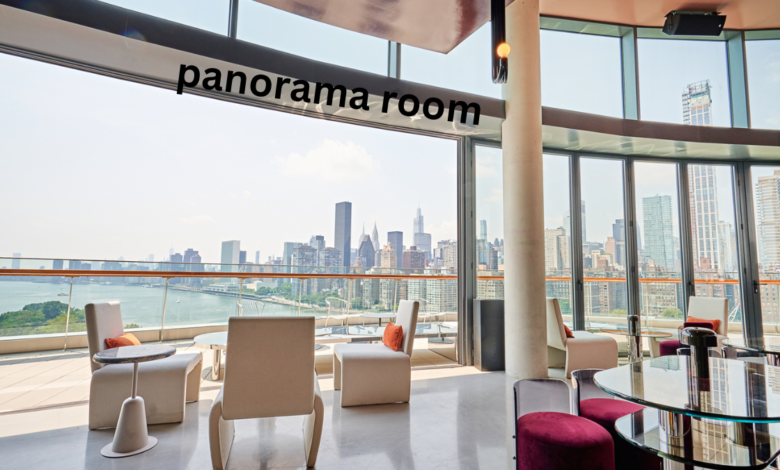Exploring the Panorama Room: The Ultimate Guide to This Architectural Marvel

The concept of a “panorama room” merges stunning design with the sheer beauty of expansive views. Imagine a space where walls dissolve into windows, and the horizon becomes a part of your living experience. This is the essence of the panorama room—a space that invites you to experience your surroundings in a new and immersive way. Whether you’re a homeowner looking to enhance your living space or a design enthusiast eager to learn more, this guide will explore everything you need to know about panorama rooms, from their origins and design principles to how they can transform your space.
What is a Panorama Room?

A panorama room is a type of architectural and interior design space characterized by its extensive use of glass and open design to offer unobstructed, sweeping views of the surrounding environment. These rooms are designed to maximize visual access to the outdoors, providing a seamless transition between indoor and outdoor spaces. The term “panorama” itself suggests a wide, unbroken view, and this concept is integral to the design of a panorama room.
At its core, a panorama room often features floor-to-ceiling windows or glass walls that offer expansive views of landscapes, cityscapes, or other natural features. The design of these rooms prioritizes openness and light, often incorporating elements such as sliding glass doors, skylights, and open floor plans. The idea is to create a space that feels connected to its surroundings, allowing occupants to enjoy the beauty of the outside world from the comfort of their homes.
The panorama room concept has its roots in architectural styles that emphasize a strong connection between interior and exterior spaces. Modern and contemporary designs frequently feature these types of rooms, but they can be adapted to various architectural styles. The key is the integration of large glass surfaces and thoughtful design elements that enhance the view and natural light.
The Benefits of a Panorama Room
Panorama rooms offer numerous benefits that go beyond their stunning aesthetics. These spaces are designed to enhance the quality of life for their occupants by providing a range of practical and emotional advantages. Here’s a look at some of the key benefits of having a panorama room in your home or building.
One of the most immediate benefits of a panorama room is the abundance of natural light it brings into the space. The extensive use of glass allows sunlight to flood the room, creating a bright and airy atmosphere. This natural light can have a positive impact on mood and well-being, as exposure to sunlight is known to boost serotonin levels and improve overall mental health. Additionally, natural light can help reduce the need for artificial lighting during the day, leading to potential energy savings.
Another significant advantage of panorama rooms is their ability to enhance the connection between indoor and outdoor environments. By incorporating large windows or glass walls, these rooms create a seamless transition between the living space and the natural world outside. This connection can make a space feel larger and more open, offering occupants the sensation of being immersed in their surroundings. Whether you’re looking out over a scenic landscape or a vibrant city skyline, a panorama room allows you to experience these views as an integral part of your daily life.
Panorama rooms also provide an excellent setting for relaxation and entertainment. The expansive views and abundant natural light create a serene environment that is perfect for unwinding after a long day. Additionally, these rooms are ideal for hosting gatherings and events, as the open design and stunning views can enhance the ambiance and create a memorable experience for guests. Whether you’re enjoying a quiet evening alone or entertaining friends and family, a panorama room can provide the perfect backdrop for a variety of activities.
Designing a Panorama Room
Designing a panorama room requires a thoughtful approach that balances aesthetics, functionality, and integration with the surrounding environment. The goal is to create a space that maximizes views and natural light while maintaining comfort and practicality. Here are some key considerations for designing an effective panorama room.
The first step in designing a panorama room is selecting the right location and orientation. The placement of the room should take into account the direction of the views and the amount of sunlight the space will receive. For example, a room with a south-facing orientation will benefit from abundant natural light throughout the day, while a west-facing room may offer stunning sunset views. The design should also consider factors such as privacy, wind exposure, and potential shading from surrounding structures or vegetation.
Choosing the appropriate glass and window treatments is another crucial aspect of designing a panorama room. The type of glass used can impact both the visual experience and the energy efficiency of the space. Options such as low-emissivity (low-E) glass can help reduce heat gain and loss, while tinted or reflective glass can provide additional privacy and glare reduction. Window treatments, such as sheer curtains or motorized blinds, can be selected to enhance comfort and control light levels without obstructing the views.
The interior design of a panorama room should complement its architectural features and enhance the overall experience. Opt for furniture and decor that are minimalist and unobtrusive to maintain an open and airy feel. Neutral color palettes and natural materials can help create a harmonious environment that highlights the views without competing with them. Additionally, consider incorporating elements such as indoor plants or water features to further integrate the indoor and outdoor spaces.
Panorama Room Examples Around the World
Panorama rooms can be found in a variety of architectural styles and settings around the world. These examples showcase the versatility and impact of panorama room design, demonstrating how different architects and designers have embraced the concept to create stunning and functional spaces.
One notable example of a panorama room is the Glass House by architect Philip Johnson. Located in New Canaan, Connecticut, this iconic home features floor-to-ceiling glass walls that provide unobstructed views of the surrounding landscape. The open and transparent design of the Glass House exemplifies the principles of panorama room design, offering a seamless connection between the interior and exterior environments.
Another impressive example is the Infinity House in the Netherlands, designed by architect Hans van Heeswijk. This contemporary home features a panorama room with expansive glass walls that frame breathtaking views of the surrounding countryside. The design of the Infinity House emphasizes the integration of nature and architecture, creating a space that feels both immersive and expansive.
In urban settings, panorama rooms can be found in luxury high-rise apartments and penthouses. The One57 building in New York City, for example, offers residents panoramic views of Central Park and the city skyline. The design of these high-rise panorama rooms often incorporates floor-to-ceiling windows and open layouts to maximize the visual impact of the views and provide an elevated living experience.
Incorporating Technology in Panorama Rooms
Technology can play a significant role in enhancing the functionality and comfort of panorama rooms. From advanced window systems to smart home integration, there are numerous ways to leverage technology to optimize the experience of a panorama room.
One key technological advancement is the use of smart glass or switchable glass. This type of glass can change its opacity or tint at the touch of a button, allowing users to control the amount of light and privacy in the panorama room. Smart glass can be particularly useful for managing glare and heat while still maintaining unobstructed views when desired.
Home automation systems can also enhance the functionality of a panorama room. These systems allow users to control various aspects of the room, such as lighting, temperature, and window treatments, through a central interface or mobile app. Integration with voice assistants and other smart devices can provide additional convenience and customization, allowing users to create the perfect ambiance with minimal effort.
Additionally, advanced climate control systems can help maintain a comfortable environment in a panorama room. Features such as automated shades, ventilation systems, and zoned heating and cooling can be integrated to ensure that the room remains comfortable regardless of external weather conditions. These systems can be programmed to adjust based on time of day, weather forecasts, or user preferences, providing a tailored and efficient solution for managing the room’s climate.
Challenges and Solutions in Panorama Room Design
While panorama rooms offer numerous benefits, they also come with their own set of challenges. Addressing these challenges effectively is essential for creating a functional and enjoyable space. Here are some common challenges associated with panorama room design and potential solutions.
One of the primary challenges of a panorama room is managing heat gain and loss. Large expanses of glass can lead to significant temperature fluctuations, making it important to choose the right glazing and insulation options. Low-emissivity (low-E) glass and thermal breaks can help reduce heat transfer and improve energy efficiency. Additionally, incorporating shading devices, such as overhangs or exterior blinds, can help control solar gain and maintain a comfortable temperature inside the room.
Privacy can also be a concern in panorama rooms, especially in urban settings or densely populated areas. While expansive glass walls provide stunning views, they can also make it challenging to maintain privacy. Solutions such as frosted glass, smart window films, or strategic landscaping can help address privacy concerns without compromising the views. Interior window treatments, such as sheer curtains or adjustable blinds, can also provide a flexible solution for managing privacy and light levels.
Another challenge is the potential for glare and UV damage to interior furnishings. Direct sunlight through large glass surfaces can create intense glare and cause fading or damage to furniture, artwork, and flooring. To mitigate these effects, consider using UV-filtering window films, installing glare-reducing coatings, and selecting furnishings with UV-resistant materials. Additionally, incorporating flexible shading options, such as motorized blinds or retractable screens, can help manage glare and protect interior elements.
Maintaining and Caring for Panorama Rooms
Maintaining and caring for a panorama room is essential to ensure that it remains in optimal condition and continues to provide a positive living experience. Regular upkeep and attention to detail can help preserve the beauty and functionality of the space over time.
Regular cleaning of glass surfaces is one of the key maintenance tasks for a panorama room. Dust, dirt, and water spots can accumulate on large glass walls and windows, impacting visibility and aesthetics. Use a mild glass cleaner and a soft, lint-free cloth to clean the glass surfaces, and avoid abrasive materials that could scratch or damage the glass.





